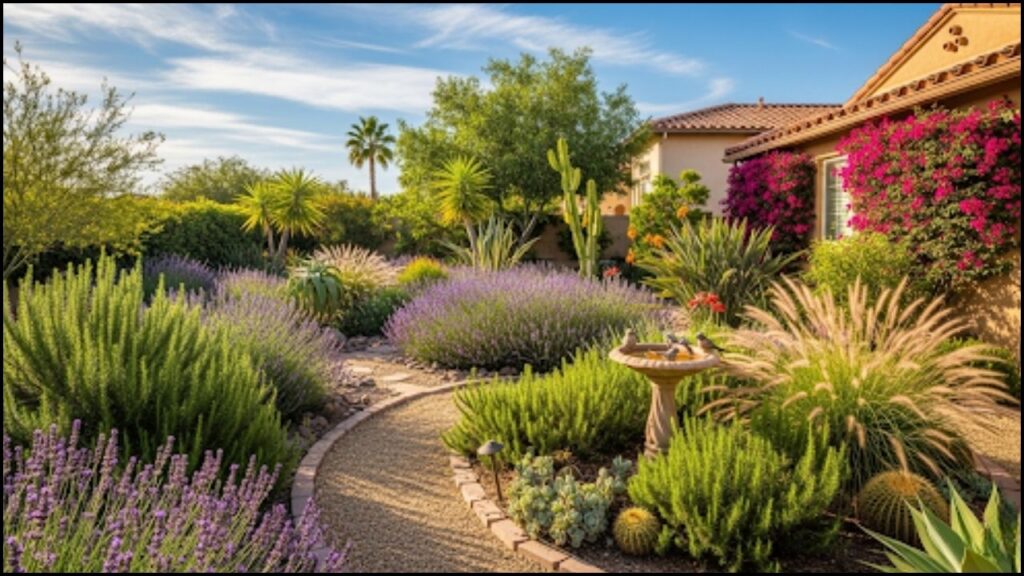As climate change intensifies and water resources become increasingly strained, a global shift is underway in landscape design. Homeowners, public municipalities, and commercial developers are increasingly adopting drought-tolerant shrubs as a cornerstone of sustainable design. This movement aims to reduce the environmental footprint of landscaping by minimizing water consumption and maintenance needs, a critical response to the global challenge of water scarcity.

The Global Imperative of Water Conservation
Water stress has emerged as a critical issue for regions worldwide, from the American Southwest to parts of Australia and the Mediterranean. A recent report from the United Nations Environment Programme (UNEP) stated that approximately 2.3 billion people live in countries experiencing water stress, with 733 million in high-and critically water-stressed areas. This growing scarcity has prompted a re-evaluation of how water is used, particularly in residential and public landscaping, which can account for a significant portion of urban water consumption.
In response, the practice of xeriscaping, a form of landscaping that reduces the need for irrigation, has gained momentum. The U.S. Environmental Protection Agency (EPA) notes that xeriscaping can reduce landscape water use by 50% or more. This approach prioritizes native and climate-appropriate plants, efficient irrigation systems, and mulching to conserve moisture. A key component of this strategy is the selection of resilient plant species, with drought-tolerant shrubs leading the way due to their hardiness and structural integrity in a garden setting.
The Role of Drought-Tolerant Shrubs in Sustainable Design
Shrubs are foundational elements in landscape design, providing structure, privacy, and year-round interest. Their drought-tolerant varieties have evolved with specific adaptations to survive periods of low rainfall. According to the U.S. Department of Agriculture (USDA), these adaptations include deep, extensive root systems that can access water far below the surface, small or waxy leaves to minimize water loss through evaporation, and a unique ability to store moisture in their stems or leaves.

“The shift to climate-resilient plants is no longer an option; it’s a necessity,” said Dr. Anya Sharma, a senior research fellow at the American Horticultural Society. “Using drought-tolerant shrubs allows us to create beautiful, functional landscapes that are aligned with the realities of a changing climate. These plants aren’t just surviving; they are thriving and, in many cases, outperforming traditional landscape species that require constant watering.”
This emphasis on resilient species also offers environmental benefits beyond water conservation. These plants often require less fertilizer and fewer pesticides, as they are naturally suited to local conditions. Their robust root systems help stabilize soil, preventing erosion, while their ability to survive dry spells reduces the risk of plant death and the subsequent need for replacement. This contributes to a more sustainable, long-term approach to landscape management.
A Diverse Palette for Arid Climates
The variety of available drought-tolerant shrubs is extensive, encompassing a wide range of sizes, colors, and textures suitable for diverse climates and design aesthetics. While specific plants vary by region, certain types are globally recognized for their resilience.
- Lavender (Lavandula): Known for its fragrant flowers and silvery-green foliage, lavender thrives in full sun and well-drained soil. It is a popular choice in Mediterranean and arid climates and requires minimal watering once established.
- Manzanita (Arctostaphylos): A native plant of western North America, manzanita is a prime example of a shrub perfectly adapted to dry, hot summers. Its smooth, reddish bark and twisting branches provide unique architectural interest year-round, making it a cornerstone of native-plant landscaping.
- Oleander (Nerium oleander): While toxic if ingested, oleander is prized for its prolific, colorful flowers and ability to tolerate extreme heat and drought. It is widely used for highway medians and public spaces due to its durability and low maintenance needs.
- Rosemary (Salvia rosmarinus): Another aromatic herb, rosemary is a woody, drought-tolerant shrub that is both useful in cooking and a beautiful addition to a garden. It performs exceptionally well in dry, sunny conditions.
The success of a climate-resilient landscape hinges on careful selection. While there are dozens of suitable species, landscape experts stress the importance of choosing plants native or well-adapted to the local ecosystem. This reduces the need for supplemental watering, fertilizer, and pest control, creating a truly sustainable and self-sufficient landscape.
The Economic and Environmental Impact
The shift toward drought-tolerant shrubs is not just an environmental measure; it is also an economic one. Landowners and municipalities are recognizing the significant cost savings associated with these plants. A study conducted by the Texas A&M AgriLife Extension Service found that a residential landscape designed with xeriscaping principles could save homeowners hundreds of dollars annually on their water bills. The reduced need for maintenance, including mowing and pruning, further lowers labor costs.
This trend is also fostering a growing market for specialized nurseries and landscape design firms that focus on sustainable, low-water solutions. “We’ve seen demand for drought-tolerant plants skyrocket in the last decade,” said Maria Rodriguez, a landscape architect based in Arizona. “Clients are not just looking for a beautiful garden; they want a responsible, long-term investment that will thrive in our future climate.” This movement is shaping the future of global landscaping, moving it from a high-maintenance, resource-intensive practice to a more responsible and resilient one.
The movement toward drought-tolerant landscaping reflects a broader global recognition of the need for climate adaptation. As water scarcity and extreme weather events become more common, these resilient plants are becoming essential components of sustainable urban and residential design. Their adoption signals a paradigm shift from landscapes that rely on intensive resources to those that work in harmony with their natural surroundings, ensuring both aesthetic value and environmental responsibility for generations to come.
These 10 Beautiful Shrubs Are Totally Edible—And Gardeners Are Obsessed
